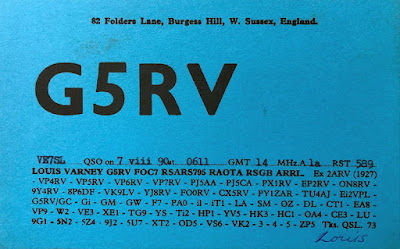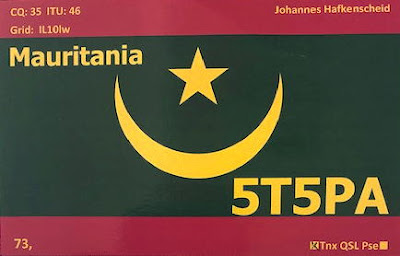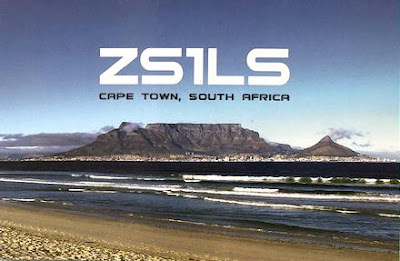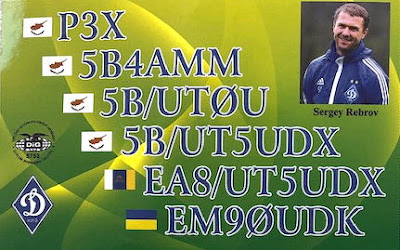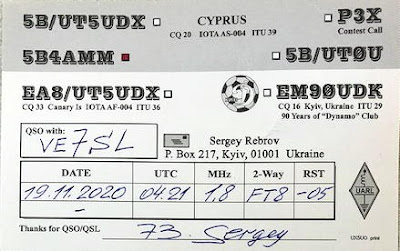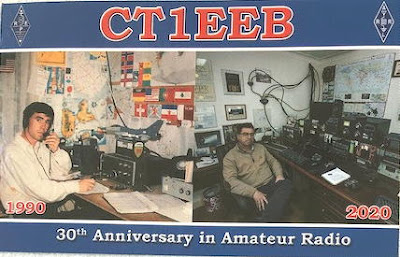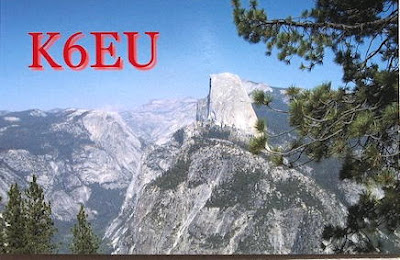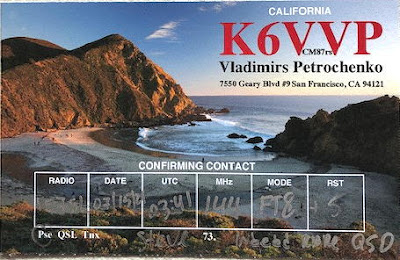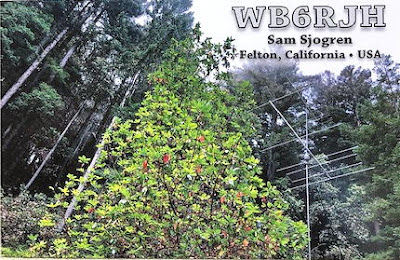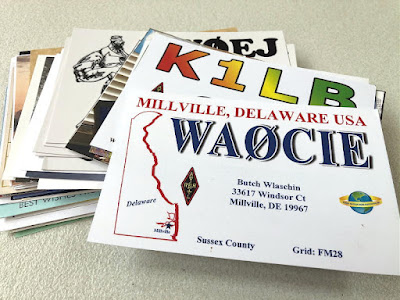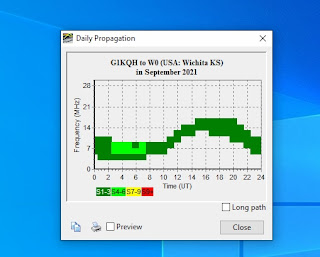 What Is a Valid QSO?
What Is a Valid QSO?
 Ham operators make radio contacts on a routine basis. We call another station or another station responds to our call, we exchange some information, maybe chat for a while and then finish the contact, clearing out with our callsigns. Most of the time we clearly know whether we had a valid radio contact, commonly referred to as a QSO.
Ham operators make radio contacts on a routine basis. We call another station or another station responds to our call, we exchange some information, maybe chat for a while and then finish the contact, clearing out with our callsigns. Most of the time we clearly know whether we had a valid radio contact, commonly referred to as a QSO.
Sometimes it is not so clear. I hear a DX station calling CQ…I call him (giving his callsign and my callsign) and I hear him say “your report is 5 and 9” so I say “QSL and 73” and put him in the log. Did I really work him? Maybe not. Did he hear my callsign correctly? Was he even talking to me? Not sure.
The question of what constitutes a valid radio contact has been asked for decades. Edward Tilton W1HDQ in the “The World Above 50 Mc” column, QST Magazine, March 1957 wrote this:
As amateurs we are presumed to be engaged in communication. This implies exchange of information, not just identification of one another. Thus, a reasonable definition of a QSO, for amateur purposes, would seem to be an exchange of useful information. Otherwise, why communicate at all?
Tilton goes on to say:
The minimum exchange for two-way work to be considered a contact has been fairly well standardized on a two-stage procedure: positive identification of calls at both ends, and the complete exchange of signal reports. The latter is about the shortest item of information that can be transmitted between two stations that will have any meaning at all. The form varies with various operating activities, but the basic idea of mutual exchange remains in all.
Actually, the exchange of signal reports may be replaced by some other “exchange of information.” For example, during VHF contests the standard exchange of information is usually the 4-character grid locator. Signal reports are not usually given.
The IARU Three Steps
The International Amateur Radio Union (IARU) in their HF Manager’s Handbook and VHF Manager’s Handbook says:
A definition for a valid QSO is:
A valid contact is one where both operators during the contact have
1. mutually identified each other
2. received a report, and
3. received a confirmation of the successful identification and the reception of the report.
It is emphasized that the responsibility always lies with the operator for the integrity of the contact.
Let’s take a practical look at the IARU definition and what it means:
1. mutually identified each other
You exchange callsigns with the other station (making sure you have them correct). This tends to happen naturally as part of the calling process in amateur radio.
2. received a report
You exchange a signal report or some other information (grid locator, contest exchange, …)
3. received a confirmation of the successful identification and the reception of the report.
You acknowledge that you have the information from 1 and 2, by saying “QSL”, “Thank you” or something similar.
Some Scenarios
The rigor applied to making a contact does vary depending on the specific situation. Here are a few specific examples that will help explain this.
FT8
The WSJT-X software used for making FT8 contacts has IARU Steps 1, 2, and 3 embedded into its communication protocol. FT8 is intended to work well under weak-signal conditions, so the software implements a rigorous use of information exchange. Appropriate use of this software guarantees a valid QSO.

The QSO starts with one station calling another (callsigns are exchanged). The standard FT8 messages (see figure) show that KØNR calls W1AW with grid locator included (TX1). Typically, W1AW would respond by calling KØNR and providing a signal report. (Signal reports are in decibels, just a number.) KØNR responds with TX3, which does two things: sends “R” to indicate that the signal report from W1AW was received AND sends the signal report of -15 dB to W1AW. When W1AW receives that transmission, it knows that callsigns and signal reports have been exchanged and sends RR73 to complete the QSO. KØNR may respond with a 73 message, but that is not required for a valid QSO.
I realize that if you haven’t worked FT8, this may be confusing. If so, just note that the design of the WSJT-X software leads the user through these specific messages to ensure that the three IARU steps happen.
VHF Contest QSO With Weak Signals
Radio contacts during VHF contests can be a bit casual: one operator calls another (callsigns exchanged) and they tell each other their grid locators. IARU Step 3 (the QSL or acknowledgment) may be assumed or perhaps one of the operators just says thanks or 73 to indicate the contact is complete and they are signing clear. But when the signals are weak, VHF operators tend to be more careful about making sure they made the contact.
Here’s a weak-signal CW QSO between KØNR and W9RM:
KØNR calls W9RM
KØNR: W9RM W9RM W9RM de KØNR KØNR KØNR
W9RM responds and sends his grid (DM58)
W9RM: KØNR KØNR de W9RM DM58 DM58 DM58 BK
KØNR responds with multiple “R”s to indicate that the grid was received and sends his grid (DM78)
KØNR: R R R DM78 DM78 DM78 BK
W9RM responds with multiple “QSL”s to acknowledge that the information is complete
W9RM: QSL QSL QSL de W9RM BK
KØNR would probably reply with “73 73 73” but that is not necessary for a valid QSO
HF Contests
HF contests are fast and furious, with a high value placed on quickly making contacts. Thus, they tend to use the bare minimum to complete a QSO. Let’s take the example of a Big Gun station making multiple contacts in succession, otherwise known as “running.” Here, ZF1A is working the CQ Worldwide DX Contest with a number of stations calling him. He initiates the radio contact with “QRZ?”
ZF1A calls QRZ?
ZF1A: ZF1A QRZ?
KØNR calls ZF1A by just saying his callsign
KØNR: Kilo Zero November Romeo
ZF1A calls KØNR and gives the contest exchange: signal report (always 59 in a contest) and CQ Zone (08 in this example)
ZF1A: KØNR 59 08
KØNR responds with a “Roger” to indicate the information was received and provides a signal report and CQ Zone 04
KØNR: Roger 59 04
ZF1A acknowledges the information and calls for the next station
ZF1A: Thank you, ZF1A QRZ?
This is a fast and tight exchange. Note that to save time, KØNR did not say ZF1A’s callsign during the contact. It does have the potential of a broken QSO if the operators are not paying close attention. KØNR must be sure he is hearing ZF1A’s callsign correctly and that ZF1A sent KØNR’s callsign correctly. Similarly, ZF1A will make sure he has KØNR’s callsign and exchange before moving on. If ZF1A is not sure of KØNR’s callsign and exchange, he will ask for a repeat. Sometimes the running station just calls QRZ? to complete the contact so IARU step 3 is implied. (If ZF1A did not have confidence that the QSO was complete, he would have asked for a repeat.)
Parks On The Air (POTA)
From the POTA rules: “POTA does not require a formal exchange, though many activators will wish to receive real signal reports, names and locations.” My experience is that the park Activator usually sends a (real) signal report and the park number (e.g., K-4404). The Hunter usually sends a real signal report and state. Something like this:
KØNR calls CQ POTA
KØNR: CQ CQ Parks on the air Kilo Zero November Romeo
KØJJW answers him
KØJJW: KØNR this is KØJJW Kilo Zero Juliet Juliet Whiskey
KØNR responds with the signal report and park number
KØNR: KØJJW you are 57 in park K-4404
KØJJW acknowledges the information and provides a signal report and state.
KØJJW: Roger. You are 5 6 into Colorado. Thanks for the activation.
KØNR confirms that the QSO is complete and moves on to the next station
KØNR: QSL and thank you, this is Kilo Zero November Romeo, Parks On The Air
When conditions are marginal, a POTA QSO will naturally tend to have signal reports and QSL messages sent multiple times to make sure that the information gets through.
Summits On The Air (SOTA)
The general SOTA rules state “QSOs must comprise an exchange of callsigns and signal reports, it is strongly recommended that the summit identifier be given during each contact.” SOTA contacts are similar to POTA contacts in terms of format, except the summit number (e.g., W0C/FR-004 ) is exchanged instead of the park number.
Time Constraints
Meteor scatter (MS) is an interesting case, mostly because it can take a long time to complete the QSO. The two stations are transmitting to each other on alternating time windows hoping that a meteor will streak by and leave an ionizing trail so that a radio contact can be made. It is common for an MS QSO to take 30 minutes or longer.
The message sequence is similar to the FT8 example, so I won’t repeat it here. Imagine sitting in front of your computer patiently waiting for the right meteor burst to occur so that 1) callsigns are exchanged 2) signal reports are exchanged and 3) a final acknowledgment occurs. This raises the question of how long is too long to count as a valid QSO? I don’t know of a specific standard but most people would agree that if the three steps occur over several days, it is probably not a valid QSO. It seems like most hams working MS complete their contacts within a few hours, typically less.
One more question: what information do you need to record concerning the QSO? This will also vary depending on the circumstances, but most hams log callsign, signal reports, time (UTC), frequency or band, and mode. Note that Logbook of The World does not store signal reports but does require and store the time of the QSO, along with the band and mode. Another example: when submitting a contest log, the context exchange from both stations must be included (and these are checked against other submitted logs). The point is you need to be thinking about how the QSO information is going to be used and recorded. [Thanks, Bob/WØBV]
Summary
The three steps in the IARU definition of a valid QSO can be summarized as: 1) exchange callsigns 2) exchange signal report or other information and 3) confirm that #1 and #2 happened. This still leaves some gray area when it comes to deciding whether a QSO was valid or not. Most of us have had that funny feeling at the end of a marginal contact: should I put this in the log or not? This is where the final IARU advice applies: The responsibility always lies with the operator for the integrity of the contact.
The post What Is a Valid QSO? appeared first on The KØNR Radio Site.
Bob Witte, KØNR, is a regular contributor to AmateurRadio.com and writes from Colorado, USA. Contact him at bob@k0nr.com.
 My Summer QSL Mailbox
My Summer QSL Mailbox
Most of my blog readers know how much I love QSLs ... real paper ones that is. In fact the lure of collecting cards was one of the main things that hooked me on radio as a pre-teen SWL!
All of the important QSLs from last winter’s 160m DX season have finally arrived along with cards for the new ones worked during this summer’s Sporadic E season on 6m … plus some other cards of interest.
Both seasons provided some good DX opportunities and several new DXCC entities were added to my totals. In fact the new countries worked this summer on the magic band finally gave me 100 confirmed for DXCC after being on the band since Cycle 20! This summer was probably the best I’ve ever seen in terms of long haul propagation to Europe and Japan. Sadly almost all of the activity is on FT8 even though signals were usually more than strong enough for CW (and sometimes SSB) modes. Hopefully the band will once again see more of these traditional modes as the solar cycle progresses.
The Top Band season was highlighted with a nice three-week period of exceptionally good propagation to many parts of Europe and regions beyond. Four new DXCC countries were added to my total bringing my 160m DXCC to 163 confirmed.
Some additional 630m band wallpaper also arrived over the summer from Arliss, W7XU. In mid-April, well-past the prime DX season, he ventured from his normal QTH in South Dakota to become W7XU/5 in Louisiana. I never in the world expected to even hear his small portable campground station let alone work him, but his signal was truly outstanding and we worked very quickly. Arliss gave me state #38 on 630m. We worked each other a few months later but this time on 2m during the August Perseids meteor shower when he was back at home in South Dakota.
The evening of July 15th produced a rarity for VE7 land … a short Sporadic E opening to California on 2m.
Four stations in and around the San Francisco region were worked with several of the signals being exceptionally strong, often the case on 2m Es.
And lastly, all 50 cards for last winter’s 40m Worked All States project were gathered over the summer months. All contacts were made using my homebrewed 1-tube Neophyte regen along with its matching 1-tube crystal oscillator.
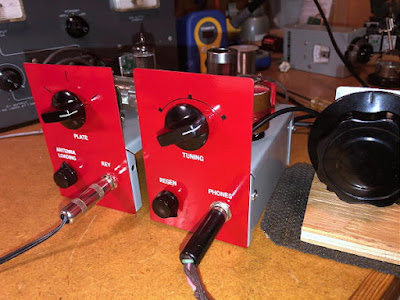 |
| Neophyte Twins with outboard bandspread on the regen |
I’ve now parked the pair on 3560 for the winter while I attempt to repeat the challenge of working and confirming all 50 states. With 7 so far, I’m looking for 43 more! If you can help out with a listen (I’m on most evenings) or with a sked, I’d love to work you on 80m with the 1-tubers.
Did I mention that I really love QSLs?
Steve McDonald, VE7SL, is a regular contributor to AmateurRadio.com and writes from British Columbia, Canada. Contact him at ve7sl@shaw.ca.
 VOAPROP configuring 2021
VOAPROP configuring 2021
Once you have all this updated, the program will perform flawless without any problem.
My thanks must be to the late G4ILO for writing such a superb piece of software, and his family that still keep his website open https://www.g4ilo.com/
Steve, G1KQH, is a regular contributor to AmateurRadio.com and writes from England. Contact him at g1kqh@arrl.net.
 Remember what it was like without it all?
Remember what it was like without it all?
Steve, G1KQH, is a regular contributor to AmateurRadio.com and writes from England. Contact him at g1kqh@arrl.net.
 LHS Episode #433: Mind the Spark Gap
LHS Episode #433: Mind the Spark Gap
Hello and welcome to the 433rd installment of Linux in the Ham Shack. In this short-topics episode, the hosts discuss several topics including RaDAR, communicating across the Atlantic in the early days of radio, taxing open-source satellites, open source and Azure, the latest release of WSJT-X and much more. Thank you for listening and have a great week.
73 de The LHS Crew
Russ Woodman, K5TUX, co-hosts the Linux in the Ham Shack podcast which is available for download in both MP3 and OGG audio format. Contact him at russ@bluecows.com.
 Get Your General License, Colorado
Get Your General License, Colorado
 The Technician Class License is the entry-level ham radio license in the USA. The next step up is the General Class License which provides operating privileges on the high-frequency bands. If you want to work the world with ham radio, you should seriously consider going for the General license.
The Technician Class License is the entry-level ham radio license in the USA. The next step up is the General Class License which provides operating privileges on the high-frequency bands. If you want to work the world with ham radio, you should seriously consider going for the General license.
The Tri-Lakes Monument Radio Association is offering a blended (online and in-person) license class to assist you in moving up to General. The class starts on Nov 6th and will have five sessions: two in-person sessions in Monument, CO plus three online sessions via Zoom. The final session is in-person and includes the FCC exam. (Complete schedule listed below.)
 The General License provides access to regional and worldwide communications on the HF bands via ionospheric skip, greatly expanding operational capabilities!
The General License provides access to regional and worldwide communications on the HF bands via ionospheric skip, greatly expanding operational capabilities!
• Upgrade from Technician to General Class radio privileges
• Pass your FCC General Class amateur license exam Nov 20
• Live equipment demonstrations and activities
• Learn to operate on the HF bands, 10 Meters to 160 Meters
• Gain a deeper understanding of radio electronics and theory
• Take the next step with antennas, amplifiers, digital modes
The registration fee is $30 ($20 for those under 18 years of age). In addition, students must have the required study guide: HamRadioSchool.com General License Course,
Third Edition, effective 2019 – 2023, $24.95. A current FCC Technician License is required for registration.
More information and registration page here: https://w0tlm.com/radio-classes/general-registration
For questions, email: bob@k0nr.com
Schedule
Session 1, Sat Nov 6, 1-5 pm: In-Person, Tri-Lakes Chamber of Commerce Meeting Room, Monument, CO. Ch.Ø-3 instruction
On-Demand Video Lesson (online video at your convenience). Ch.4 instruction
Session 2, Tue Nov 9, 6-7 pm: Live Zoom meeting. Ch.1-4 review and Q&A
Session 3, Thur Nov 11, 6-8:15 pm: Live Zoom meeting. Ch.5 instruction
Session 4, Sat Nov 13, 1-5 pm: Live Zoom meeting. Ch.6 instruction
Session 5, Sat Nov 20, 1-5 pm: In-Person, Tri-Lakes Chamber of Commerce Meeting Room, Monument, CO. Wrap-up, review, VE Exam session.
The post Get Your General License, Colorado appeared first on The KØNR Radio Site.
Bob Witte, KØNR, is a regular contributor to AmateurRadio.com and writes from Colorado, USA. Contact him at bob@k0nr.com.
 Get Your General License, Colorado
Get Your General License, Colorado
 The Technician Class License is the entry-level ham radio license in the USA. The next step up is the General Class License which provides operating privileges on the high-frequency bands. If you want to work the world with ham radio, you should seriously consider going for the General license.
The Technician Class License is the entry-level ham radio license in the USA. The next step up is the General Class License which provides operating privileges on the high-frequency bands. If you want to work the world with ham radio, you should seriously consider going for the General license.
The Tri-Lakes Monument Radio Association is offering a blended (online and in-person) license class to assist you in moving up to General. The class starts on Nov 6th and will have five sessions: two in-person sessions in Monument, CO plus three online sessions via Zoom. The final session is in-person and includes the FCC exam. (Complete schedule listed below.)
 The General License provides access to regional and worldwide communications on the HF bands via ionospheric skip, greatly expanding operational capabilities!
The General License provides access to regional and worldwide communications on the HF bands via ionospheric skip, greatly expanding operational capabilities!
• Upgrade from Technician to General Class radio privileges
• Pass your FCC General Class amateur license exam Nov 20
• Live equipment demonstrations and activities
• Learn to operate on the HF bands, 10 Meters to 160 Meters
• Gain a deeper understanding of radio electronics and theory
• Take the next step with antennas, amplifiers, digital modes
The registration fee is $30 ($20 for those under 18 years of age). In addition, students must have the required study guide: HamRadioSchool.com General License Course,
Third Edition, effective 2019 – 2023, $24.95. A current FCC Technician License is required for registration.
More information and registration page here: https://w0tlm.com/radio-classes/general-registration
For questions, email: bob@k0nr.com
Schedule
Session 1, Sat Nov 6, 1-5 pm: In-Person, Tri-Lakes Chamber of Commerce Meeting Room, Monument, CO. Ch.Ø-3 instruction
On-Demand Video Lesson (online video at your convenience). Ch.4 instruction
Session 2, Tue Nov 9, 6-7 pm: Live Zoom meeting. Ch.1-4 review and Q&A
Session 3, Thur Nov 11, 6-8:15 pm: Live Zoom meeting. Ch.5 instruction
Session 4, Sat Nov 13, 1-5 pm: Live Zoom meeting. Ch.6 instruction
Session 5, Sat Nov 20, 1-5 pm: In-Person, Tri-Lakes Chamber of Commerce Meeting Room, Monument, CO. Wrap-up, review, VE Exam session.
The post Get Your General License, Colorado appeared first on The KØNR Radio Site.
Bob Witte, KØNR, is a regular contributor to AmateurRadio.com and writes from Colorado, USA. Contact him at bob@k0nr.com.

